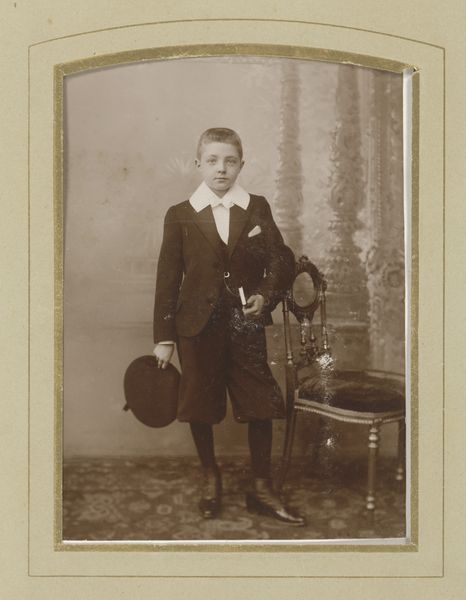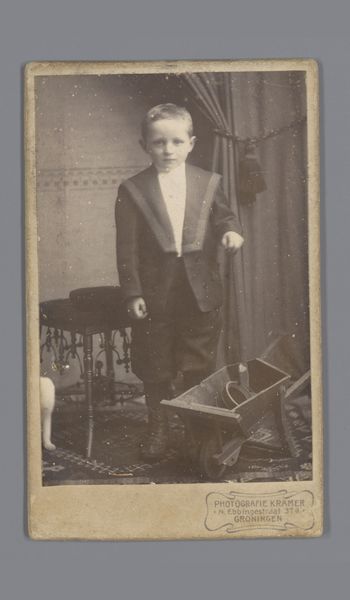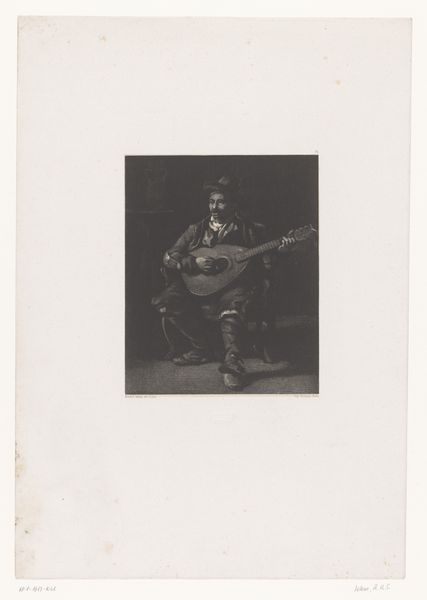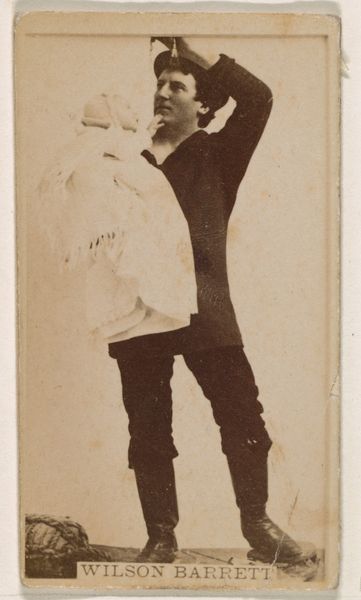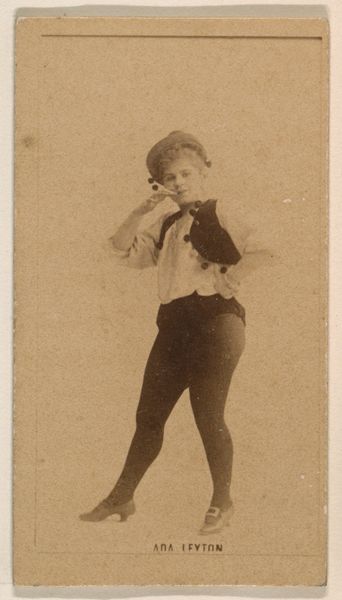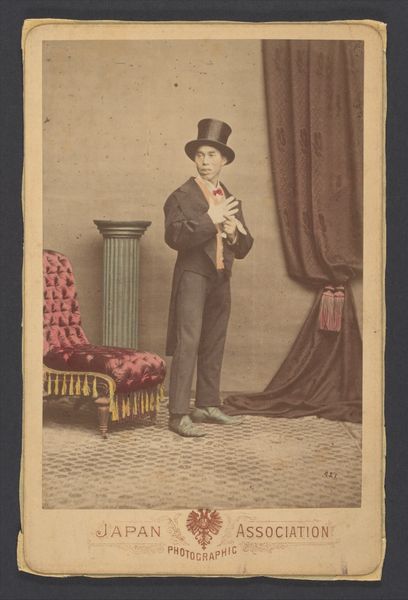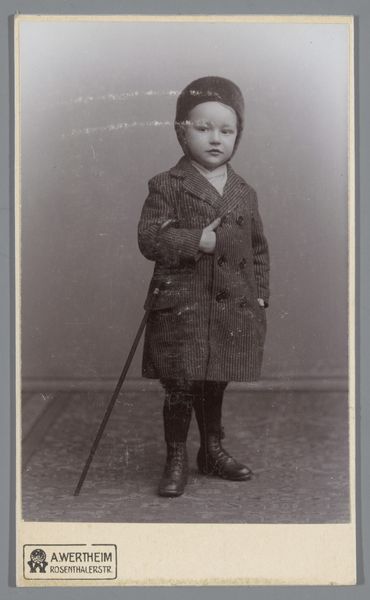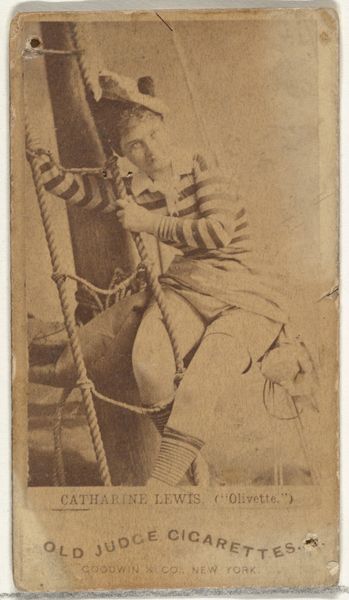![[Studio Portrait: Man Carrying Cello or Large Stringed Instrument, Venice] by Carlo Ponti](/_next/image?url=https%3A%2F%2Fd2w8kbdekdi1gv.cloudfront.net%2FeyJidWNrZXQiOiAiYXJ0ZXJhLWltYWdlcy1idWNrZXQiLCAia2V5IjogImFydHdvcmtzLzBjOGI1MTA2LTEwNmMtNGU0ZS04ZDM0LTAwYWRmNjhkZjEyNy8wYzhiNTEwNi0xMDZjLTRlNGUtOGQzNC0wMGFkZjY4ZGYxMjdfZnVsbC5qcGciLCAiZWRpdHMiOiB7InJlc2l6ZSI6IHsid2lkdGgiOiAxOTIwLCAiaGVpZ2h0IjogMTkyMCwgImZpdCI6ICJpbnNpZGUifX19&w=3840&q=75)
[Studio Portrait: Man Carrying Cello or Large Stringed Instrument, Venice] 1860s - 1870s
0:00
0:00
photography
#
portrait
#
photography
#
men
#
genre-painting
#
musical-instrument
Dimensions: Image: 9.4 x 6.0 cm Mount: 10.0 x 6.1 cm
Copyright: Public Domain
Editor: Here we have a carte-de-visite photograph from the late 1860s or 70s by Carlo Ponti. It depicts a man carrying what appears to be a cello, though its size makes it seem closer to a string bass. It's intriguing how the instrument dwarfs the figure. What catches your eye? Curator: I'm immediately drawn to the photograph's materiality itself. Think about the context: mass-produced photographic prints becoming affordable, allowing for wider distribution and consumption of images. This image flattens class distinctions. This fellow, seemingly working-class with his humble garb, becomes accessible and even collectible. Editor: That's a great point about accessibility. The sitter's clothes do seem worn and plain. How does that impact your view? Curator: It shifts the focus. It's no longer just about portraying an individual, but documenting a certain type of labor and existence. We see the physical burden—that huge instrument almost overwhelming the man. The photograph, like the man, becomes a carrier of social and economic information. Consider the labor of the photographer, setting up the shot, versus the labor of the man, carrying an instrument likely used for others' entertainment. Editor: I hadn’t considered it that way, almost like two types of labor frozen in a single image! So the man’s status, his work, are embedded within the photo itself? Curator: Exactly. And the circulation of the carte-de-visite turns this documentation of labor into a commodity, a collectible item. It prompts questions about value – who and what is being valued here? What gets exchanged? Is it artistic value? Financial value? Labor value? Editor: That’s a really compelling perspective. I initially saw just a portrait, but you've reframed it entirely. I appreciate learning about how materials and economics influence this reading. Curator: And seeing how a simple portrait reflects much larger questions of class, work, and value lets you bring new tools to viewing photography.
Comments
No comments
Be the first to comment and join the conversation on the ultimate creative platform.
